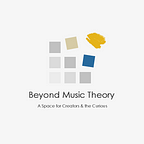Arrangement Planning Tips For Songwriters
Knowing how to go from a melody with chords played on the guitar or piano to a full song arrangement can be daunting. How do you go about this process? In this post I will try to give you some tips on how you can approach a song arrangement.
So, now that you have a song structure with melodies and chords to work with, it is time to assign these to the other instruments. But before you start doing that, you should keep some things in mind.
The Right Vibe for the Message
The musical genre you choose to work with usually has an impact on the way you convey your message. Music genres are identified as such because of their musical idiosyncrasies. This encompasses rhythmic, harmonic, melodic and instrumentation approaches, song structures, etc. As an example, if you are making a rock song, maybe using clarinet parts isn’t in the cards but hey, don’t let me stop you from experimenting!
Usually, if you are trying to recreate an intimist vibe for your song, then you may want to choose acoustic instruments and probably, the fewer, the better. But if you want to go for a wall of sound, depending on the genre, then you may want to move away from these. On a side note, there are different ways of creating a wall of sound like layering lots of instruments or you may want to use less instruments but make them sound big in the production.
What is your song about? Do you want a gentle or hard-hitting song? Maybe something in between? Do you need your mix to sound harsh or raw? For what effect? Do you want it to sound modern, “synthy”? All these decisions will depend on the message you want to convey, the vibe, the feel.
Instruments and Their Roles
A song arrangement is the result of all the different elements you choose and how these are interacting or “talking” with each other. One of the first decisions you have to make is to figure out what instruments you want to use and what their role will be.
For example, are you going to feature any particular instrument? If so, the rest of the instruments should have supporting or complementary roles. This can be the case if you feel that what drives your song is a particular guitar part. On the other hand, you may want to use the guitar but to fill the background with some strumming parts to complement what you already have going on.
Another example, you may want to use a particular drum sound as the driving force of your song, like a kick. The drums will not only be grooving but also will be specially featured in your song. If you want the listener to understand this, then you must also make it clear in the production/mixing.
But you don’t have to feature a particular instrument for the whole song. You may decide that in the bridge section you will highlight a different instrument. This can be a great way of creating contrasts between sections.
Texture and Dynamics
Texture can be related to how many instruments are playing at a given time and it can be thick or dense (lots of instruments); light or sparse (fewer instruments). But it is also related to other elements of music, such as melody, harmony and rhythm and how these different materials are combined.
This translates to deciding how much of what you want going on at a given moment of your song. This can greatly affect the perception of dynamics throughout the song. The chorus is usually more dense and the verses sparse. For instance, you may want to sing the verses over a guitar and then when then when the chorus comes in the first time, you introduce the bass and a tambourine. When the second verses start you may want the piano join in. In the second chorus you may already want to hear the previous instruments with the drums.
Planning how you introduce the instruments throughout your song can contribute greatly to maintain interest and avoid boredom.
What is right for your song will depend on your message and most importantly, of your aesthetic sense as a musician. The main thing to keep in mind is that you need to realize what type of song you are making, you need to be involved with your song in such a way that it tells you everything you need to know regarding instrumentation, texture or production. There is a level of planning involved in this process, one that you should fully embrace and then build your arrangement from it!
Do you have any other arrangement planning tips? Leave your suggestions in the comment section below!
Happy Composing!
Published
Originally published at http://beyondmusictheory.wordpress.com
